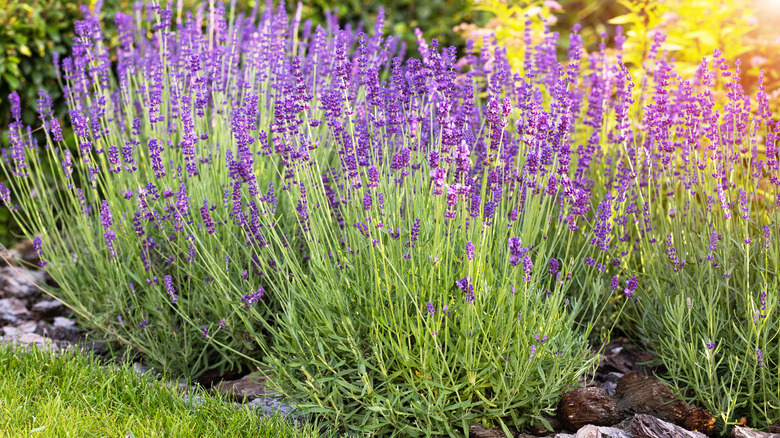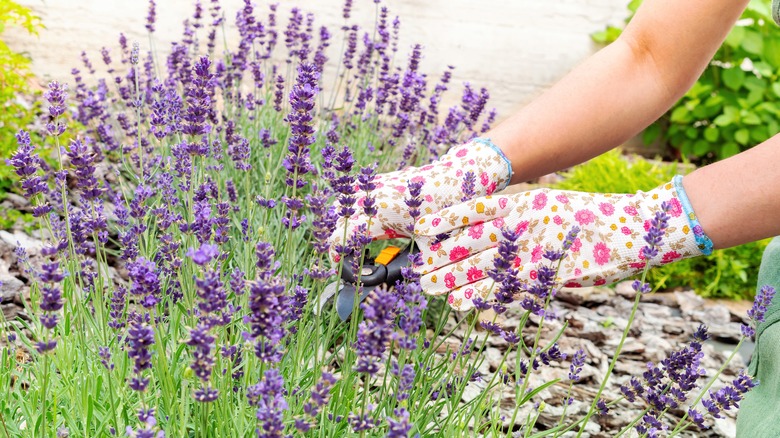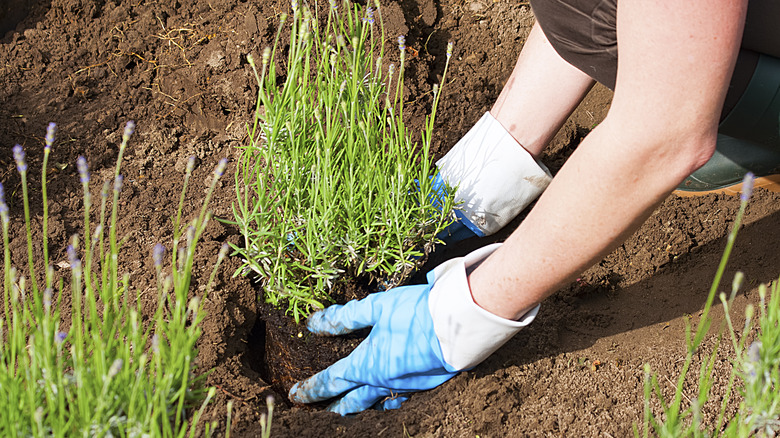The Best Time To Plant Lavender For A Sweet-Smelling, Vibrant Garden
We may receive a commission on purchases made from links.
Lavender is a wonderful perennial herb that is beautiful, useful for many purposes, and delightfully fragrant. It is generally associated with Mediterranean climates, but there are a number of lavender varieties that are cold hardy enough to be grown in a USDA Zone 5. To give your lavender the best chance for success, it's good to plant it early enough in the season to give it time to become established. Late spring, when daily temperatures have become steadily warm and the danger of hard frost has passed, is the best time to plant lavender in your garden.
Many people think of the lush lavender fields of Provence in France when they think of lavender. Lavender grows well in this part of France due to the temperate climate and slightly alkaline, sandy soil. But if you can emulate these soil conditions in your garden, you will be able to have beautiful lavender plants that last for years. Also, choosing the right planting time is the first step toward creating a hospitable location for your lavender plants.
While lavender can be grown in containers, it's best to establish it in the ground as early as possible, so that it can become acclimated to its permanent location. Be sure to choose a variety of lavender suited to your growing zone. English lavender varieties are generally more cold tolerant than French varieties. Hidcote and Munstead are two varieties hardy to USDA Zone 5, making them suitable for places that have cold winters.
Planting your lavender in late spring
Most likely, you will be able to find lavender plants at your local plant nursery. Check for spring plant sales at botanical gardens as well. If you can't find the variety you want locally, there are a number of mail order plant companies that sell lavender. Lavender plants usually become available in mid-spring. Once you get them, keep them indoors and water them lightly until you're ready to plant.
It's a good idea to wait until all danger of frost is past before planting your lavender in spring. Usually waiting until mid-May is sufficient, but check the weather forecast. Sometimes a late spring snowfall or hard frost can happen, especially in these times of somewhat unpredictable climate changes. Once you're confident that there won't be any more nights below freezing, you can plant your lavender. Planting between mid-to-late May is good timing to get it settled in before summer. Some lavenders bloom in summer, while some bloom in spring; young plants may not bloom the first year, and this is normal.
Choose a sunny spot. Lavender needs full sun to bloom, so plant it where it will receive at least six hours of direct sunlight per day if possible. Another thing to keep in mind for the planting spot is to make sure the location is not near a drainspout or other place where the lavender would get too wet when it rains. Lavender thrives best in a well-drained location.
Give your lavender a good start
As you get ready to plant in mid to late May, you want to make sure to prepare the soil. Lavender likes sandy, loamy, well-draining soil that is slightly alkaline. You can even buy special potting soil that has all the amendments that lavender needs, available online or at nurseries, such as this mix from Amazon for $14.99. Though the soil is designed for use in containers, it's fine to use it when planting lavender in your garden; just add it to the prepared hole.
After planting, water your lavender plant lightly once a day for a few days to help it get established. After that, water sparingly, as this is a drought-tolerant plant that loves hot, dry soil to help its buds grow more fragrant. Observe your lavender plant over the summer to see how it's adjusting to its new home in your garden. Even if it's not blooming the first year, as long as it's putting on new growth, it's probably doing fine.
If you live in a warmer climate (USDA Zone 7-10), you may plant your lavender in early autumn. The mild winter temperatures won't be a problem, and planting before winter gives the lavender a chance to get established before having to endure its first hot summer in your garden.


